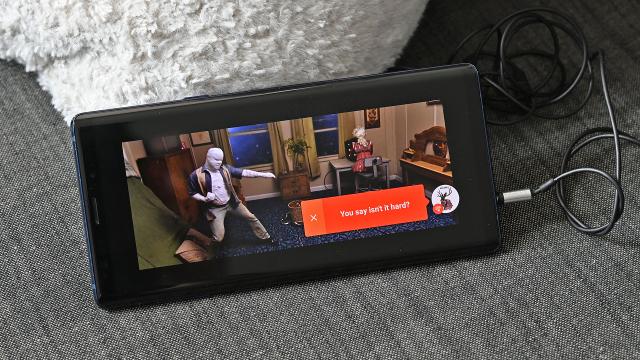Not long after Apple acquired music recognition app Shazam last spring, the music-ID service introduced a new feature called Pop-up that allowed it to identify songs being played on the device itself, in addition to outside sources.
Unfortunately, the downside to Shazam’s Pop-up feature was that, in order to make it work, you had to unplug or disconnect your headphones so the device could hear the music as it played through the device’s own speakers. That’s a bit awkward, and if you’re using headphones to listen to music in a library or similar location, you were still kind of out of luck.
But in its latest update for Android users, Shazam has upgraded its Pop-up feature (which must be turned on in Shazam’s settings menu, as it’s not enabled by default) so that it can tap into your device’s internal audio stream and identify music even when you’re wearing headphones, including wireless headphones connected over Bluetooth.
In our quick test of the feature, using a pair of Samsung Galaxy Buds, the updated version of Pop-up performed mostly as expected and had no issues picking out Geowulf’s “Saltwater” from the background of a commercial despite the commercial’s voice-over narration.
However, it appears that Shazam’s music recognition is a bit spottier when using wireless headphones compared to wired audio. When I tried to Shazam Miike Snow’s “Paddling Out” while using the Galaxy Buds, Shazam wasn’t able to recognise the song. But when I switched to wired headphones and tried again, Shazam almost instantly identified the track, and the Pop-up feature even displayed the song’s lyrics in real-time.
Still, for anyone who has ever wanted to ID a song while riding the bus or train without disturbing everyone else on board, Shazam’s upgraded Pop-up tool is a handy improvement. We have reached out to Shazam for more clarification regarding song identification on wired headphones compared to Bluetooth audio, and we will update the story if we hear back.
Sadly, for Shazam users on iPhone and iPad looking for similar support, you’ll have to keep waiting as iOS currently does not support persistent notifications and audio permissions in the same manner as Android. Although, since Apple owns Shazam, it wouldn’t be a big surprise if Shazam figured out a workaround sometime in the future.
